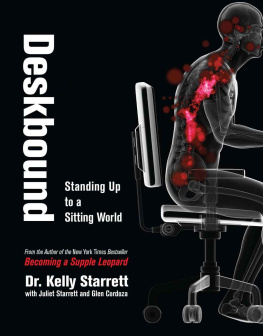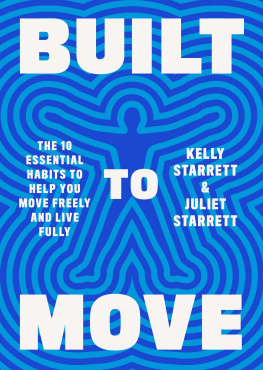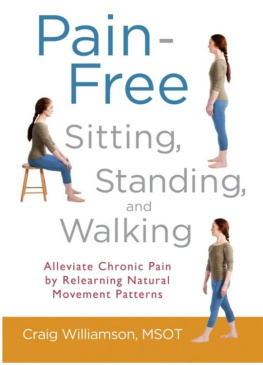Kelly Starrett - Deskbound: Standing Up to a Sitting World
Here you can read online Kelly Starrett - Deskbound: Standing Up to a Sitting World full text of the book (entire story) in english for free. Download pdf and epub, get meaning, cover and reviews about this ebook. year: 2016, publisher: Victory Belt Publishing, genre: Religion. Description of the work, (preface) as well as reviews are available. Best literature library LitArk.com created for fans of good reading and offers a wide selection of genres:
Romance novel
Science fiction
Adventure
Detective
Science
History
Home and family
Prose
Art
Politics
Computer
Non-fiction
Religion
Business
Children
Humor
Choose a favorite category and find really read worthwhile books. Enjoy immersion in the world of imagination, feel the emotions of the characters or learn something new for yourself, make an fascinating discovery.
- Book:Deskbound: Standing Up to a Sitting World
- Author:
- Publisher:Victory Belt Publishing
- Genre:
- Year:2016
- Rating:3 / 5
- Favourites:Add to favourites
- Your mark:
- 60
- 1
- 2
- 3
- 4
- 5
Deskbound: Standing Up to a Sitting World: summary, description and annotation
We offer to read an annotation, description, summary or preface (depends on what the author of the book "Deskbound: Standing Up to a Sitting World" wrote himself). If you haven't found the necessary information about the book — write in the comments, we will try to find it.
Deskbound: Standing Up to a Sitting World — read online for free the complete book (whole text) full work
Below is the text of the book, divided by pages. System saving the place of the last page read, allows you to conveniently read the book "Deskbound: Standing Up to a Sitting World" online for free, without having to search again every time where you left off. Put a bookmark, and you can go to the page where you finished reading at any time.
Font size:
Interval:
Bookmark:
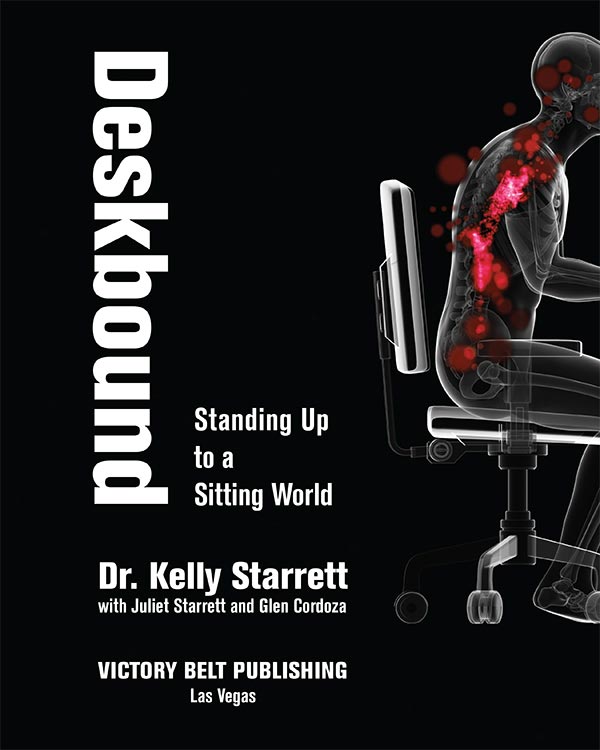
First published in 2016 by Victory Belt Publishing Inc.
Copyright 2016 Kelly Starrett, Juliet Starrett, and Glen Cordoza
All rights reserved
No part of this publication may be reproduced or distributed in any form or by any means, electronic or mechanical, or stored in a database or retrieval system, without prior written permission from the publisher.
ISBN-13: 978-1-6286005-82 (hard cover)
978-1-6286011-14 (ebook)
The information included in this book is for educational purposes only. It is not intended or implied to be a substitute for professional medical advice. The reader should always consult his or her healthcare provider to determine the appropriateness of the information for his or her own situation or with any questions regarding a medical condition or treatment plan. Reading the information in this book does not create a physician-patient relationship.
Victory Belt is a registered trademark of Victory Belt Publishing Inc.
Cover Design: Tom Wiscombe, TomWiscombe.com
Design: Yordan Terziev and Boryana Yordanova
RRD 0116
SP_ver_b
This book is dedicated to Principal Tracy Smith and the students and staff at Vallecito Elementary School in San Rafael, Californiathe first all-standing school in the world.
Table of Contents
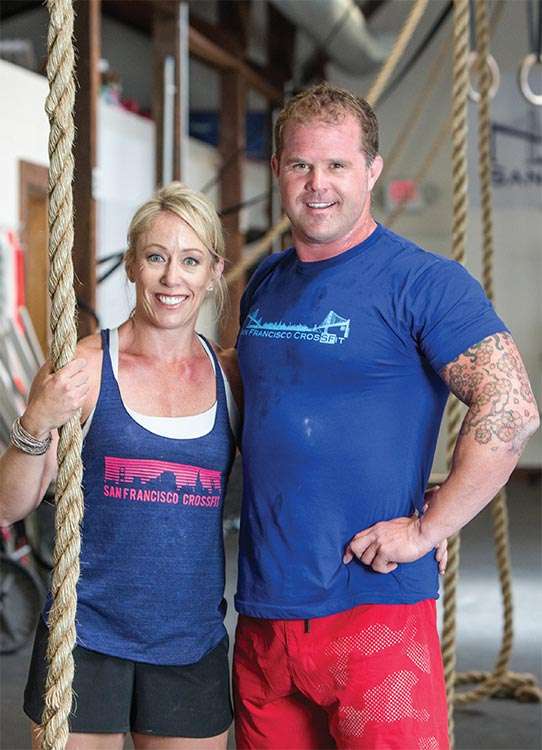
Introduction
Youve already heard that sitting is the new smoking. While this may sound like ridiculously overblown media hype, the author of the phrase isnt backing down. He is Dr. James Levine, director of the Mayo ClinicArizona State University Obesity Solutions Initiative, and hell even go further. He says, Sitting is more dangerous than smoking, kills more people than HIV and is more treacherous than parachuting. He concludes simply, We are sitting ourselves to death.
The good doctor isnt the lone alarmist. Dr. Levine and a swiftly growing number of experts, backed by a mountain of research, argue that sitting for as little as two continuous hours increases the risk of heart disease, diabetes, metabolic syndrome, cancer, back and neck pain, and other orthopedic problems. Sitting will shorten your life, just like smoking.
Many studies are also demonstrating that the effects of long-term sitting arent reversible through exercise or other good habits. This means that if you eat well and work out religiously for an hour a day, but then sit for all or most of your other waking hours, the sitting behavior will chip away or even cancel out the benefits of all your exercise at the gym. You are still considered a sedentary person.
Some experts argue that sitting is even more pernicious than smoking. An Australian study conducted in 2008 reports that every hour of television watched after age 25 reduces the viewers life expectancy by 21.8 minutes.
The typical seated office worker has more musculoskeletal injuries than any other industry sector worker, including construction, metal industry, and transportation workers. One researchers conclusion: sitting is as much an occupational risk as lifting heavy weights on the job.
For the past two decades, doctors and research scientists have been studying the deadly impact of sitting too much. The media has more recently caught up to name the issue a public health crisis because of the broad body of evidence linking sedentary behavior to a wide range of negative health outcomes. Today, the World Health Organization ranks physical inactivitysitting too muchas the fourth biggest preventable killer globally, causing an estimated 3.2 million deaths annually. In just the last 20 years, the simple act of sitting has leapfrogged to the top of the health killer charts globally.
The Ramifications of Sitting
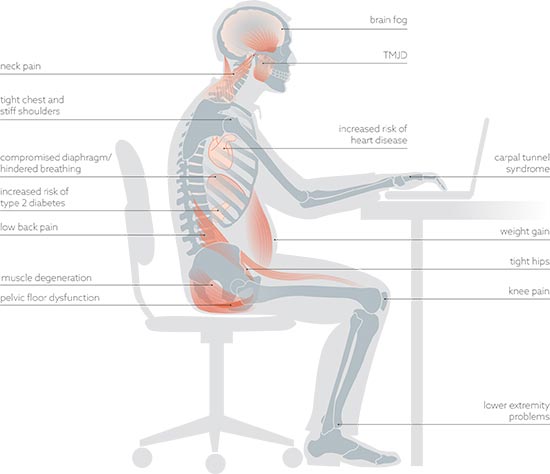

SITTING while eating breakfast
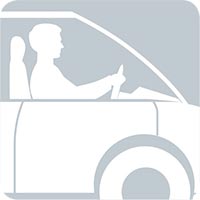
SITTING on the way to work
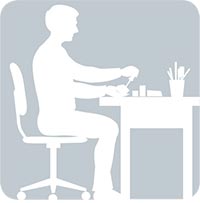
SITTING at work

SITTING in front of a computer

SITTING while eating dinner

SITTING while slouched over a phone
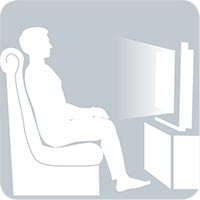
SITTING in front of the TV
How do we make sense of thisand fix it? The answer is simple. Unless we are asleep, we human beings are designed to move. Our normal physiology depends on this important fact. We evolved a central nervous system to sense changes around us and to move us through our environment. For nearly 200,000 years, Homo sapiens spent the majority of their time on the move. If they wanted something to eat, they had to hunt for it or dig it up out of the ground. If they wanted to travel, they had to get there by foot. All the movement that surrounded survival might sound exhausting to us now, but that activity shaped our bodies design, both internally and externally. Our bodies are built for movement, and in turn movement keeps our bodies healthy. It is a symbiotic relationship that has allowed our species to survive.
The problem with evolution is that it has no foresight. It couldnt predict the invention of the chair. In the beginning, this simple four-legged piece of furniture didnt have a notable impact on human health. For most people, it was little more than a place to rest after a hard day in the field or factory. Fast-forward to the 21st century. In an astonishingly short period, the citizens of the developed nations of the world have become almost completely sedentaryfrom the way we shop and travel to the way we work and play. Today, Americans spend an average of 13 hours a day sitting.
Once the desk/chair combination became the cultural norm in the workplace, other sitting-based innovations followed. The intercom allowed office workers to communicate without getting up from their chairs. The TV set seduced people of all ages into passive leisure-time activity. In the 1950s, when cars had become affordable to the general public and the interstate highway system was developed, people began flocking to the suburbs, and the commuter culture was kick-started. Then, of course, came the computer, and our fate as sedentary creatures was sealed. We had become deskbound.
The Surgeon Generals first report on physical inactivity and health was published in 1996. Similar to the Surgeon Generals 1964 report on tobacco, it illuminated the broad body of evidence linking sedentary behavior to a wide range of negative health outcomes.
The problem with sitting is that it seems so innocent and natural. Our bodies easily bend into that shape, so how could it be bad for us? Of course, if we sat with perfect posture for 15 minutes and then spent the rest of our waking hours moving, then that short stint of sitting wouldnt be bad for us. But sitting is like eating potato chipsrarely do we do it in moderation.
Next pageFont size:
Interval:
Bookmark:
Similar books «Deskbound: Standing Up to a Sitting World»
Look at similar books to Deskbound: Standing Up to a Sitting World. We have selected literature similar in name and meaning in the hope of providing readers with more options to find new, interesting, not yet read works.
Discussion, reviews of the book Deskbound: Standing Up to a Sitting World and just readers' own opinions. Leave your comments, write what you think about the work, its meaning or the main characters. Specify what exactly you liked and what you didn't like, and why you think so.

